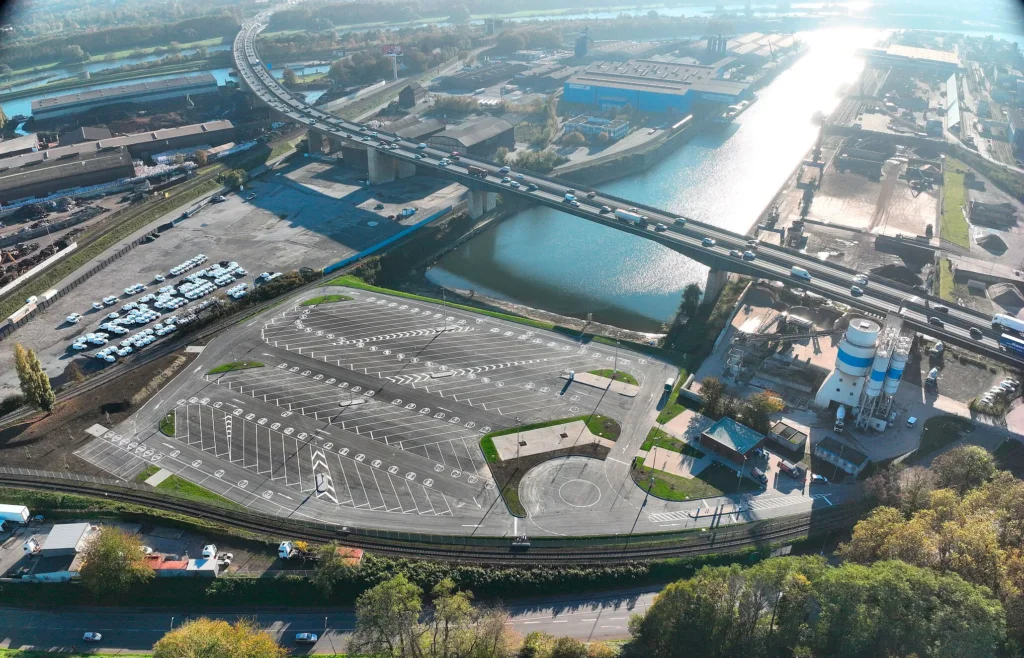Several hundred new parking spaces for trucks will be built in Brandenburg. It is still not enough to meet the needs of the transport industry. At this pace, Germany will need a few more decades to create enough infrastructure. Right now, there is a shortage of 31 thousand parking spaces, and the volume of transport is growing.
330 parking spaces for lorries will be built along motorways A24 and A10 by the end of 2022, the daily Märkische Allgemeine reports. In addition, according to the announcement of the Brandenburg Ministry of Transport, motorway inns will be extended at A2, A10, A13 and A24, where another 700 places for trucks will be built. Construction, however, will not start until 2022 or 2023.
At the beginning of this year, the North Rhine-Westphalia transport department also announced plans to expand the car parks and build additional 100 spaces.
A drop in the ocean of needs
Every day, over 100 thousand trucks need parking spaces on German highways. In Brandenburg alone, there is a lack of 1.5 thousand parking spaces for trucks. Currently, 3.8 thousand are available. Another 300 will be built in only four years, and the industry’s needs are constantly growing and at a rapid pace.
According to the analysis of the VEDA association of private parking (autohofs) managers, there is a shortage of 31 thousand parking spots for trucks.
This result is based on the analysis of updated data on parking levels for lorries, reports of relevant offices from all federal states and federal authorities, as well as on night-time censuses carried out on selected sections outside official car parks.
Moreover, every day about 15 percent of truck drivers spend their night in German car parks without any sanitary facilities. To meet current needs, not taking into account traffic growth, it will take another 20 years for Germany to meet the demands of the industry. Every year, on average, up to 1500 new parking spaces are created. This number dropped significantly due to the exhaustion of the potential that allowed investors to simplify legal procedures.
The drivers pay for the lack of infrastructure
When the tachograph “calls” for a break, drivers due to the lack of appropriate infrastructure must choose between breaking the rules on working time and rest or parking in a prohibited place (i.e. in the parking lot under the supermarket, on the roadside or on the access road). Paying a fine is not the biggest problem. Some truckers lose their health or get involved in fatal accidents due to lack of parking spaces.
As calculated by VEDA, the number of fatal incidents involving improperly parked trucks increased by as much as 20 percent.
Shortages in the infrastructure will deepen
Transport is growing at a dizzying pace. According to estimates of the German Ministry of Transport from 2010 until 2030, the volume of transport in the country was to increase by 17 percent. Meanwhile, the forecast for 2030 was reached by the German transport industry in 2017.
The German government expects a clear increase in truck traffic. Over the next 12 years, it will grow by at least 30 percent, and Brandenburg expects to double the number of lorries on motorways in the coming years.
Necessary change of strategy
According to VEDA, it is necessary to change the strategy and create more parking facilities off the highways. Otherwise, the country will not be able to deal with the lack of parking lots in the next decade. As members of the association emphasize, car parks outside motorways will be cheaper by an average of 50 thousand euro each.
In Germany, there are more and more initiatives and pilot programs designed to help the driver find a place to take a break.
The Federal Office of Road Engineering (BASt) works on a method of intelligent management of existing parking lots for lorries. “Telematically controlled compact parking” is the name of the project, which aims to increase the capacity of car parks at motorway access points and reduce the number of dangerous parking maneuvers while maintaining the prescribed periods of work and rest of drivers.
However, before BASt implements its solution, drivers can use various applications that help find parking spaces. One of them is Transparking, which not only indicates the nearest free space but also provides more detailed information about the facilities available at a given parking lot.
Photo: Trans.INFO










